10 Droop Proof Plants
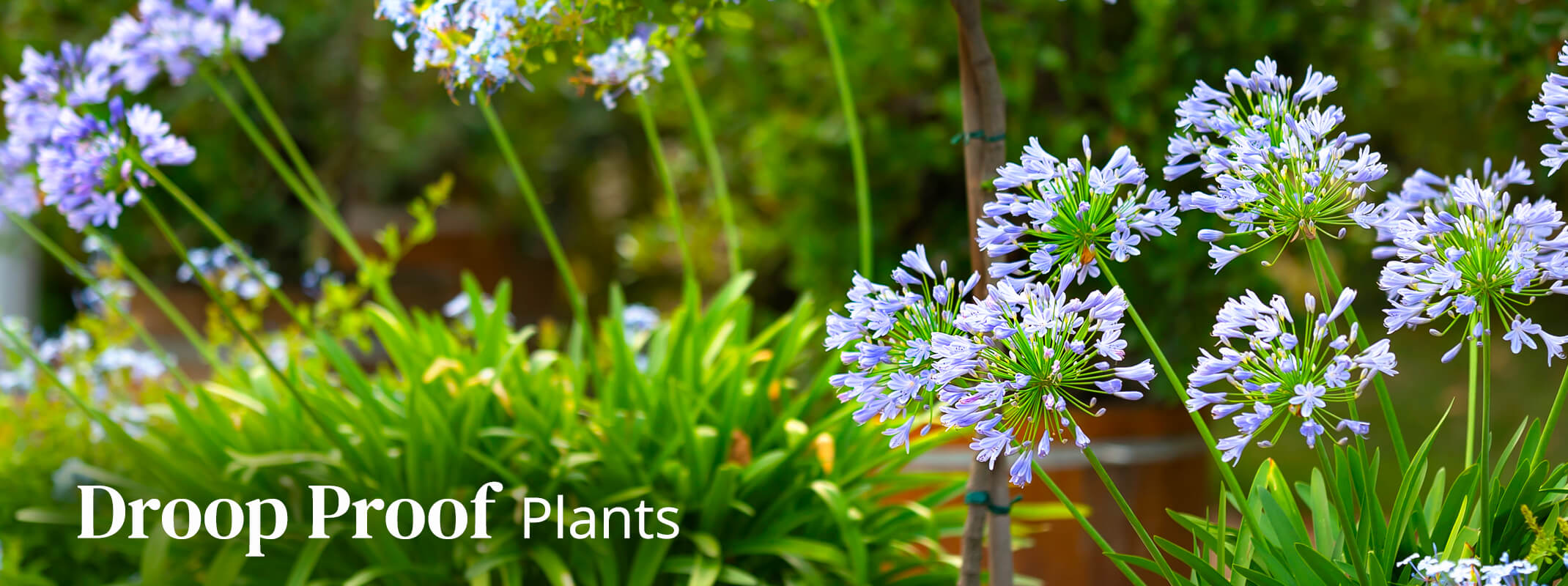
There are many wonderful plants that offer beauty, color and texture, but few offer such qualities PLUS refuse to droop and drag their leaves in excessive heat. Drought tolerant and easy to maintain once established, check out these 10 Droop Proof Plants…
1. Salvia
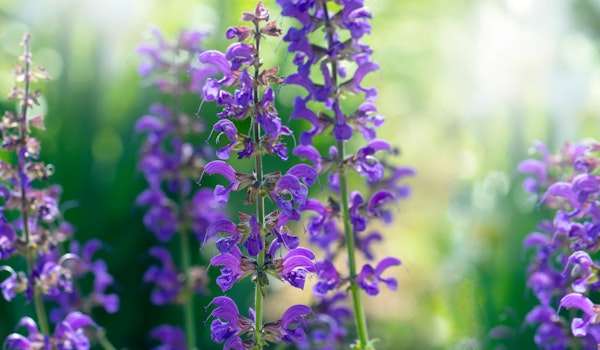
This versatile beauty seems to keep checking off the list all the great qualities you want in a perennial. Attractive to our friendly pollinators, easy to maintain, drought tolerant once established and now a droop proof plant. Salvia is one incredible plant. Great in borders, containers, as mass plantings and in rock gardens.
Care: Thrives in lean to average, loose, well-drained soil. Benefits from light afternoon shade in hot southern climates. Water deeply, regularly during first growing season. Once established, reduce frequency. Feed sparingly; high nutrition hinders flowering. Remove spent flowers to promote continued bloom.Pruning time: spring. prune to a few inches above ground, after threat of frost.
2. Lantana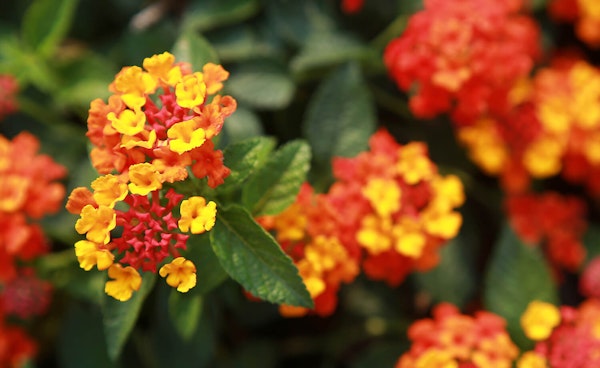
A showy, heat and drought tolerant shrub with large, bright colors of flower clusters. The tidy, mounded, trailing habit works well for borders, containers, or mass plantings. Produces virtually no seeds, saving energy for a constant show of blooms. Thrives in average, well-drained soils. Water deeply, regularly in first growing season. Once established in the landscape, reduce frequency; water potted plants when soil surface becomes dry.
3. Foxtail Fern
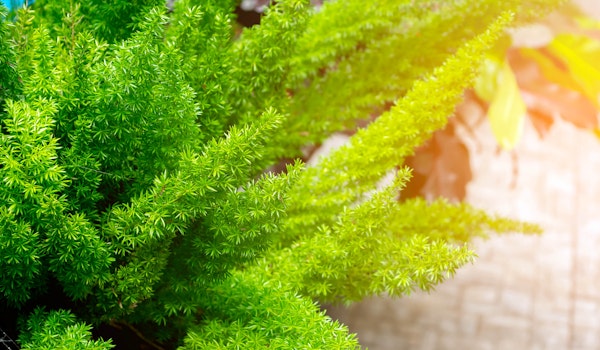
This unusual perennial adds textural contrast to beds and borders. Long, upright, plume-like stems hold soft, needle-like leaves. Develops red ornamental berries in fall. An excellent choice for hanging baskets and containers. Semi-evergreen in mild winter regions; use in containers and overwinter indoors in cold winter regions.
Care: Thrives in enriched, evenly moist, well-drained soils. Avoid harsh, hot afternoon sun exposures. Water deeply, regularly during first growing season to establish an extensive root system. Once established, prefers regular moisture, but tolerates mild drought. For a tidy appearance, remove old, faded stems. Tolerates mild frost.Pruning time: fall.
4. Lomandra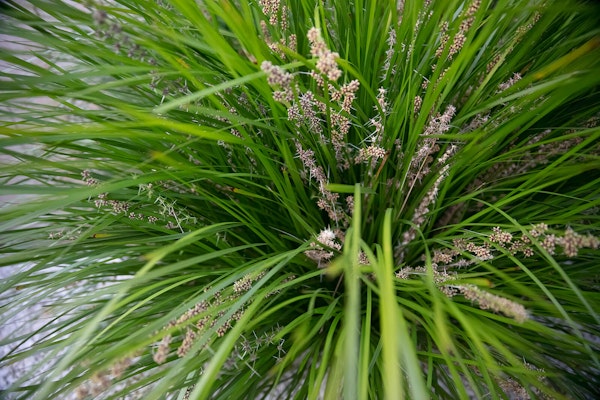
A tough, easy-care, grass-like plant for mass plantings, dry borders and containers. A wonderful, versatile, drought and salt spray tolerant alternative to liriope and low-growing shrubs.
Care: Provide a loose, well-drained soil. Best with some shade in hot southern regions. Water deeply, regularly during the first few growing seasons to establish an extensive root system. Once well established, reduce frequency; tolerates moderate drought. Prune away or rake out dead foliage before new foliage emerges in early spring.
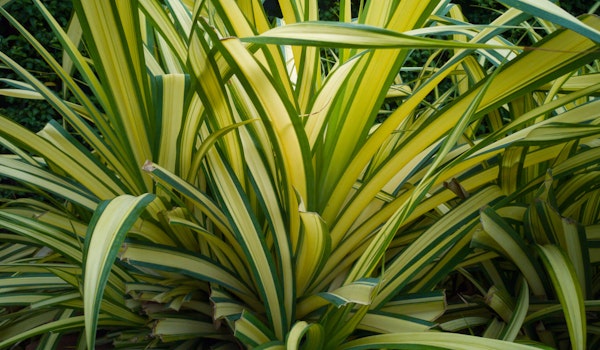 5. Phormiums
5. Phormiums
Long, arching leaves that add unique color and texture to the landscape. Grow in containers for a colorful, tropical effect. Foliage great for cut arrangements. Evergreen. Phormiums are available in an array of colors to tie in nicely to your existing plants.
Care: Follow a regular watering schedule during the first growing season to establish a deep, extensive root system. Watering can be reduced after establishment. Feed with a general purpose fertilizer before new growth begins in spring.
6. Coleonema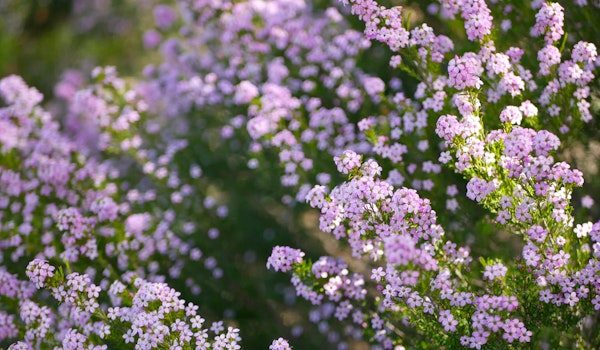
Light, wispy shrub displays attractive, blooms over a long season. Use along walkways or paths where branches can be reached. Evergreen.
Care: Thrives in well-drained, light, sandy soils, away from harsh winds. Follow a regular watering schedule during the first growing season to establish an extensive root system. Apply a general purpose fertilizer before new growth begins in spring. For a formal appearance, prune annually after flowering.
7. Loropetalum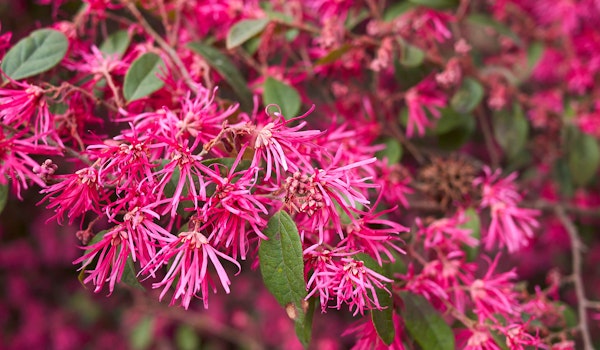
An exceptional foundation plant or accent specimen. Use to create high contrast effects in beds and borders. Evergreen.
Care: Provide organically rich, neutral to slightly acidic, well-drained soil. Keep roots cool with a thick layer of mulch. Water deeply, regularly in first growing season to establish root system. Once established, reduce frequency; tolerates mild drought. Apply an acid fertilizer after bloom. Blooms on old wood; prune after flowering.Pruning time: spring after flowering, only as needed to maintain desired shape.
8. Agapanthus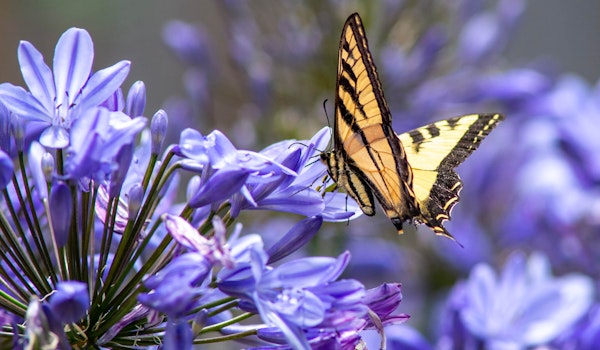
Attractive flower clusters on stalks above clumping, narrow, strap-like, evergreen foliage. Effective in groups to create a lush tropical effect. Occasionally reblooms, if spent flower stems are promptly removed.
Care: Easily grown in average, well-drained soils. Water deeply, regularly in first growing season to establish an extensive root system. Once established, reduce frequency; tolerates mild drought. Apply fertilizer before new growth begins in spring; repeat after flowering. Blooms best when undisturbed, but may be divided when overcrowded.
9. Berberis or Barberry Shrubs 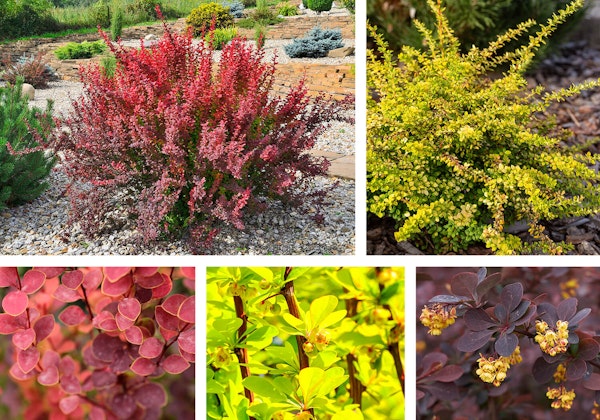
This ornamental evergreen offers stunning foliage in colors that run the spectrum from fall to spring. They also come in a range of compact to tall shrubs. Barberries are low maintenance shrubs that attract birds.
- Height: 3 to 8 ft.
- Width: Up to 7 ft.
- Sun: Part Sun, Full Sun
- Deer Resistant
Care: While Barberries prefer full sun, and will give their best color in this setting, they are tolerant of part sun as well. They do well in well-draining soil but don’t like wet feet.
10. Cactus and Succulents 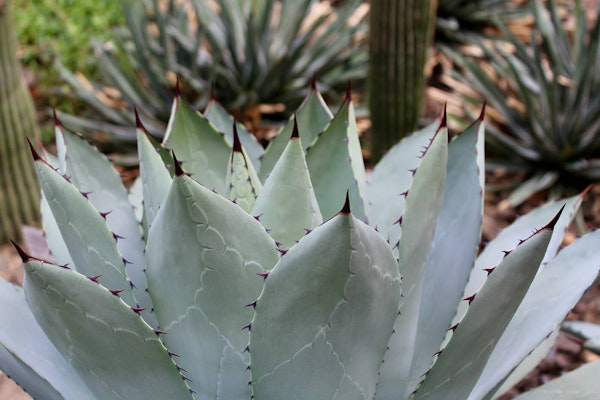
Intensely colorful, fleshy, architectural and easy to care for, succulents and cacti find their way into all kinds of horticultural applications: landscapes, dish gardens and garden containers, terrariums, vertical gardens, rock gardens, and along pathways. They can provide interest to almost any area where there is adequate light. These reliable beauties are definitely droop proof.
Care: Containers with succulents in your home add a finishing touch to the design. When growing them outside, whether you’re using hardy or tender succulents, they look great as focal-points, groundcovers, in containers as patio accents, or used in living sculptures, like fences or wreaths. There are some things to consider when growing succulents indoors and outdoors.
5 Incredible Succulents
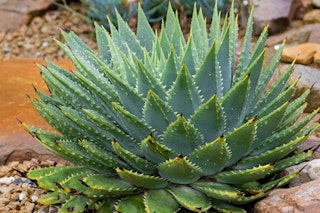
Spiral Aloe (Aloe polyphylla)
- The Spiral Aloe is characterized by its unique spiral arrangement of thick, succulent leaves that grow in a symmetrical rosette shape.
- The leaves are usually green or bluish-green, with some varieties displaying reddish or purplish tones on the leaf margins.
- The leaves grow in a distinct spiral pattern, creating a mesmerizing geometric effect.
- Like other aloes, the Spiral Aloe is well-adapted to dry conditions and can withstand periods of drought.
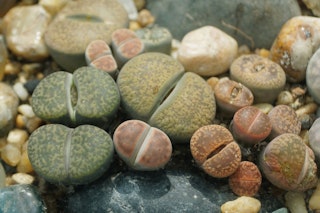
3. Lithops (Living Stones)
- Lithops are famous for their remarkable camouflage, as they resemble small stones or pebbles, to help them blend in with their rocky desert environments.
- Unlike most plants, Lithops have two fused leaves, with a slit on the top where a flower emerges during the flowering season.
- These plants have a low, ground-hugging growth habit, and most of their body is below the soil surface to protect against harsh environmental conditions.
- When in bloom, Lithops produce daisy-like flowers in various colors, such as yellow, white, or pink.
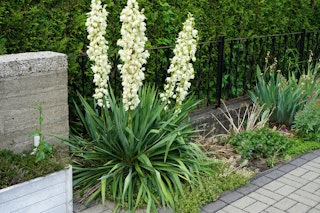
4. Yucca
- Yucca plants have long, stiff, sword-shaped leaves that grow in rosettes, often forming dense clusters.
- When mature, yuccas produce tall, sturdy flower stalks with showy, bell-shaped or creamy white flowers.
- Yuccas are hardy and can thrive in various environments, from deserts to grasslands and even in some forested regions.
- Yuccas are well-adapted to arid conditions, and their succulent-like leaves enable them to store water effectively.
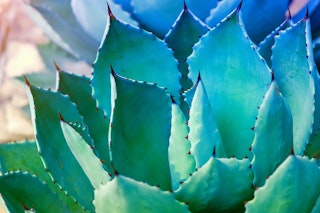
2. Agave
- Agave plants are characterized by their basal rosettes, with thick, fleshy leaves radiating from a central point near the ground.
- The leaves are usually stiff and succulent, often ending in sharp spines or teeth along the margins.
- Agaves are generally slow-growing, long-lived plants that can take several years to mature and produce flowers.
- Agave species are well-adapted to arid and semi-arid regions, making them highly drought-resistant.
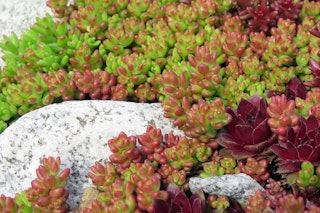
5. Sedum
- Sedums are known for their fleshy, succulent leaves that store water, making them drought-resistant.
- Available in various shapes and sizes, most have a low, spreading growth habit, forming dense mats or clumps.
- Sedums produce clusters of small, star-shaped flowers in various colors, such as white, pink, yellow, and red, attracting pollinators like bees and butterflies.
- Sedums are great for rock gardens, containers, and as ground cover.
Gardening Essentials for your Droop Proof Plants
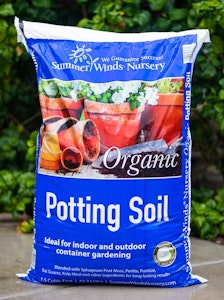
We recommend - SummerWinds Potting Soil
Our SummerWinds Potting Soil is Registered Organic and ideal for outdoor and indoor gardening. Blended with the best ingredients to provide long-lasting results and the happiest of plants. Available in 1.5 cu ft., 20 quart and 8 quart Bags (developed with E.B. Stone Organics).
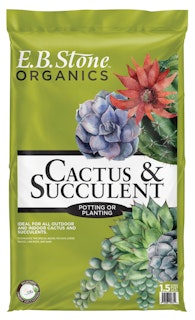
Cactus & Succulent Potting or Planting Mix
An ideal potting mix for all types of indoor cactus and succulents. Contains: Fir Bark, Lava Rock, Canadian Sphagnum Peat Moss, Sand and Aged Redwood. E.B. Stone Organics Cactus & Succulent Potting Mix offers numerous benefits for cacti and succulents. It provides excellent drainage, preventing waterlogging and root rot. The mix is specifically formulated to mimic their natural arid environment, promoting healthy root growth. With low organic content, it prevents overwatering and supports successful growth. This mix helps maintain optimal soil conditions, fostering vibrant, resilient cacti and succulents in containers or garden beds.
- E.B. Stone Organics
- 1.5 cu ft. Bag
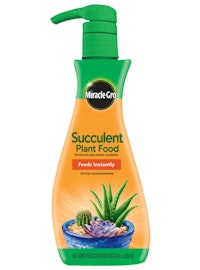
Miracle Gro Succulent Plant Food
Miracle-Gro Succulent Plant Food offers essential nutrients for healthy growth, vibrant colors, and robust root development. Its easy application, quick-acting formula, and prevention of overfeeding ensure successful cultivation of succulents. The balanced blend enhances plant resilience and stress recovery, promoting lush, thriving succulents.
Don't Forget The Mulch...
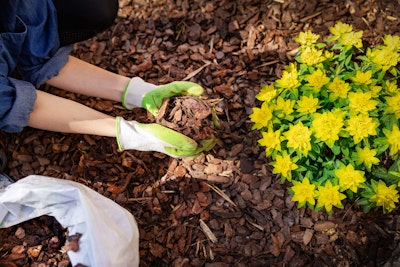 Mulching – or covering a garden surface with a layer of mulch material – provides many advantages to your summer landscape but the biggest and the most important advantage is retaining water and water conservation. If you haven’t yet, now is a wonderful time to lay down some material. Don’t worry, we’re here to help make sense of mulch!
Mulching – or covering a garden surface with a layer of mulch material – provides many advantages to your summer landscape but the biggest and the most important advantage is retaining water and water conservation. If you haven’t yet, now is a wonderful time to lay down some material. Don’t worry, we’re here to help make sense of mulch!
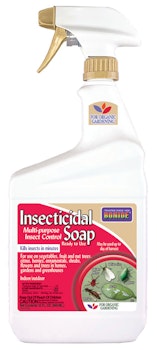
Don't forget to protect with - Bonide Insecticidal Soap
Safe for indoor use and out, Bonide Insecticidal Soap will prevent and protect your plants from insects, even killing exising insects in minutes. A multi-purpose insect control for organic gardening is great to use to on vegetables, ornamentals, shrubs, flowers, and more.
Sources: Monrovia.com

